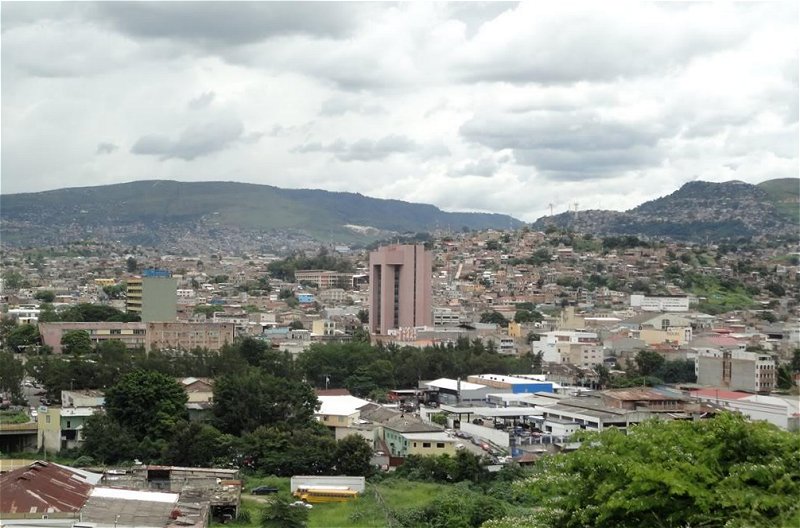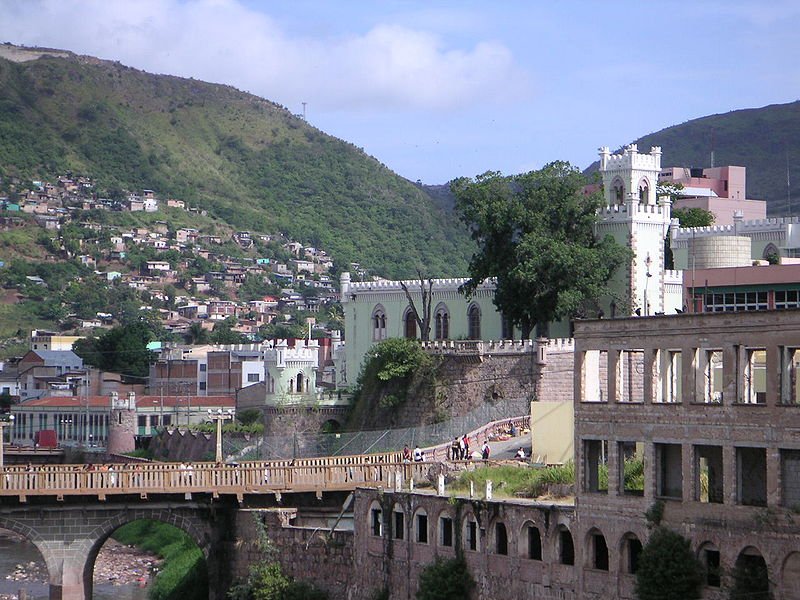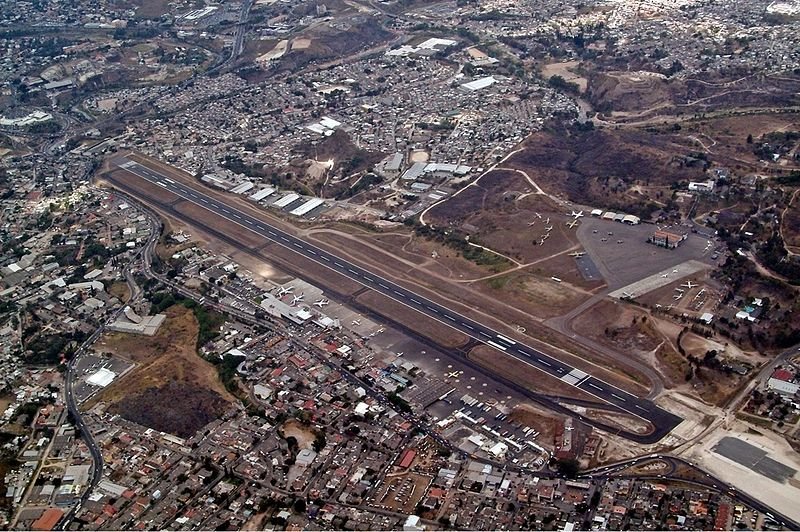
 Tegucigalpa, Honduras
Tegucigalpa, HondurasSource: https://commons.wikimedia.org/wiki/File:Comayag%C3%BCela_Central_Bank_Annex.jpg
Author: Jaetguz

Tegucigalpa is the capital and most populous city in Honduras. Often known locally as Tegus, it is located in the south-central highland region of the country, at an elevation of 990 m (3,250 ft). The city covers 201.5 sq km (77.8 sq mi) and has a population of 1.13 million people (2011 estimate).
Tegucigalpa was founded in 1578. It occupies a site that was formerly native villages of indigenous tribes. The Spanish originally named it Real de Minas de San Miguel de Tegucigalpa. In the early years, the capital of Honduras was at Comayagua, but the growth of Tegucigalpa, fueled by mining wealth, eventually eclipsed the capital.
 Tegucigalpa, Honduras
Tegucigalpa, HondurasSource: https://commons.wikimedia.org/wiki/File:Tegucigalpa_(216).JPG
Author: Soman

Tegucigalpa was given city status in 1821. When Honduras became an independent republic, and from 1838, both Comayagua and Tegucigalpa alternated the role of capital. Over time, however, it soon become apparent that Tegucigalpa is better placed to be the national capital, and in 1880, it was declared the permanent capital, while Comayagua was delegated to a provincial role.
Tegucigalpa is in the highlands with elevations ranging from 935 m (3,068 ft) at the lowest to 1,463 m (4,800 ft) at its highest neighborhoods. The metropolitan area comprises Tegucigalpa and its sister city Comayagüela, which is located across the Choluteca River. Comayagüela is often regarded as the neglected, poorer sister, less developed and less affluent compared to Tegucigalpa proper. The urban area is surrounded by high mountains which cause pollution to be trapped, resulting in lingering smogs over the city.
Tegucigalpa experiences a tropical wet and dry climate, moderated by its high altitude. June is the warmest month, with average high temperature of 23.4°C (74.1°F). It is also the wettest month, receiving 249.5 mm (9.823 in) of rain. January is the coolest, when average low temperature drops to 14.3°C (57.7°F).
 Tegulcigalpa Airport, Honduras
Tegulcigalpa Airport, HondurasSource: https://commons.wikimedia.org/wiki/File:Tegucigalpa_Airport_overview_OJEV.jpg
Author: Oscar Josue Elvir Vasquez

Visiting Tegucigalpa
The Tegucigalpa International Airport at Toncontín is often regarded as one of the most dangerous airports in the world, due to many air tragedies that have taken place there. The airport receives flights from Atlanta, Guatemala City, Houston, La Ceiba, Miami, San José de Costa Rica, San Pedro Sula and San Salvador.If arriving at Toncontín is too much of a hair-raising experience, you can also fly to San Pedro Sula and take a bus to Tegucigalpa.
Places of Interest in Tegucigalpa
- City Parks
Tegucigalpa has a number of city parks including Parque La Leona, Parque el Picacho, Parque Del Soldado, Parque Juan A. Lainex, Plaza España and Plaza del Libertador. Many of the historic sights and monuments are at or near the parks. - United Nations National Park
Public park on El Picacho Hill overlooking Tegucigalpa. The Picacho Metropolitan Zoo is located there.
 Latest updates on Penang Travel Tips
Latest updates on Penang Travel Tips
About this website

Dear visitor, thank you so much for reading this page. My name is Timothy Tye and my hobby is to find out about places, write about them and share the information with you on this website. I have been writing this site since 5 January 2003. Originally (from 2003 until 2009, the site was called AsiaExplorers. I changed the name to Penang Travel Tips in 2009, even though I describe more than just Penang but everywhere I go (I often need to tell people that "Penang Travel Tips" is not just information about Penang, but information written in Penang), especially places in Malaysia and Singapore, and in all the years since 2003, I have described over 20,000 places.
While I try my best to provide you information as accurate as I can get it to be, I do apologize for any errors and for outdated information which I am unaware. Nevertheless, I hope that what I have described here will be useful to you.
To get to know me better, do follow me on Facebook!
Copyright © 2003-2025 Timothy Tye. All Rights Reserved.

 Go Back
Go Back